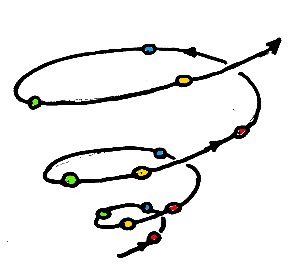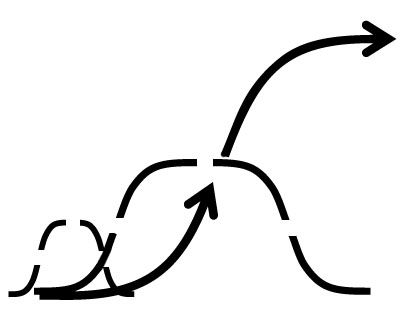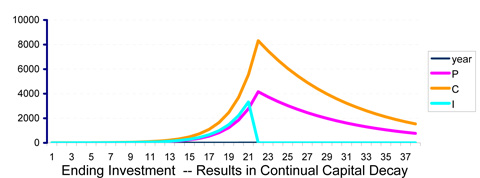I’ve found that it eventually pays, to let my moral dilemmas hurt my feelings if I actually want to know the answer. I don’t ever dwell on emotional pain. I just know I can learn from it if I attentively listen to what it’s about. Our world is spiraling out of control, yet again, as if people had no clue as to why.
The Pentecostal anthem “May the Circle be Unbroken” contains a kernel of systems physics I hadn’t noticed until recently, in a spiral the circles don’t connect, but are eve more separated. It came to mind when a question led me to think about the heartbreak of alienation that people all over the earth feel so personally, when they realize that are living in societies leading them into desperate troubles.
That was one of the common recognitions among the generation born after WWII, and the popular impetus for the “counter culture”. The sense everyone seemed to share was that the post war culture seemed like it would just repeat the same sort of horrible sequence of global catastrophes it had just experienced, and might learn nothing from it at all. That time lots was actually learned from the experience, of course. Only thirty years later, though, world society is clearly creating conditions for the same scale of mega-catastrophe for mankind again.
It helps to face the fact “we’re doing it again”.
We have an economy requiring everyone’s energetic cooperation, running into destabilizing limits in virtually every direction at once, with no offer of a solution but “try harder”… That’s a total formula for disaster. It helps to face the fact “we’re doing it again”. The “circle” today is ever more broken.

People keep making cultures and economies that spiral out of control. They abuse the love, cooperation and talents of their people, steering their lives toward performing tasks leading to great evil. But.. who is society but a consensus on common purposes? No one is “in change”. Still people somehow build great societies with all good intent, that contain an internal logic that is “broken”. Gradually over time we just notice them “spiraling ever further out of control”, each loop an ever further break from the past.
These aren’t metaphors, really. Growth is a spiral process. It physically builds upon the changes of to past to create ever greater changes in the future, diverging ever further from its prior path on every cycle. That we’re now losing control of it is generally felt. It’s also accurately observed in the “fishtailing” of over-corrections and panicked avoidance of terrible consequences, dodging the consequent failures of guesswork on which excess reliance was placed.
Economic planners are “shooting from the hip”, unsure what to do, because nothing is really working. The general progression is of events becoming ever more unmanageable. Having things spiral out of control is a very natural process, like some cosmic storm of misfortunes, that happens in environments. The error if there is one is our failing to notice it in time to reign it in, to make our “circle” unbroken again.


